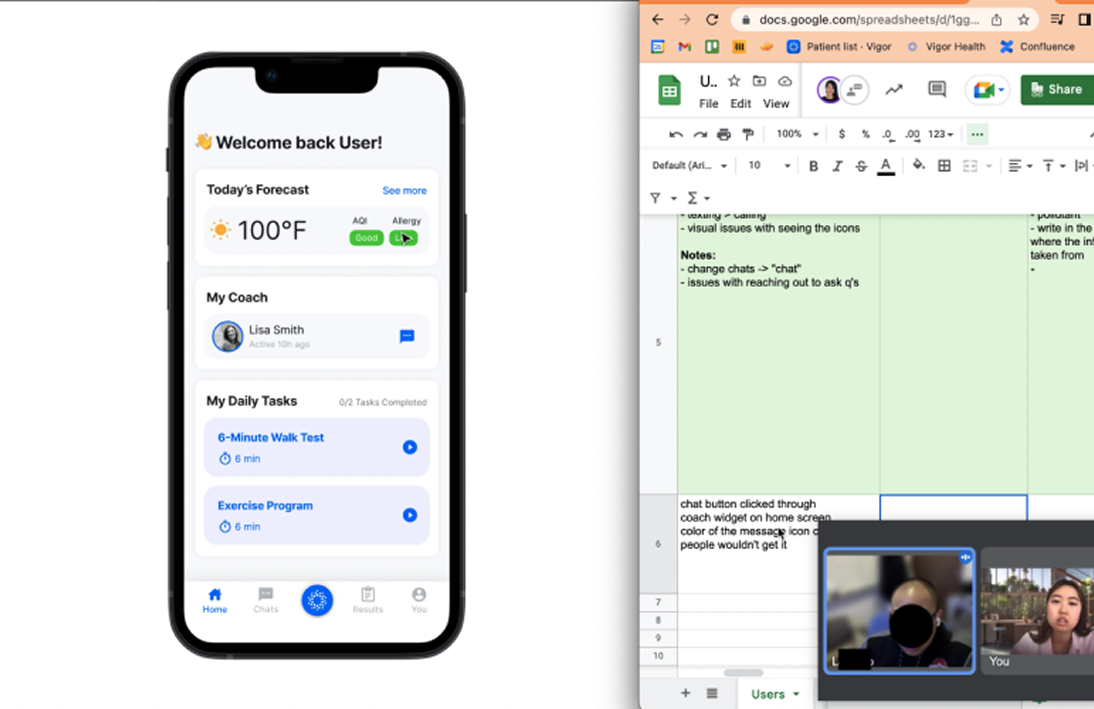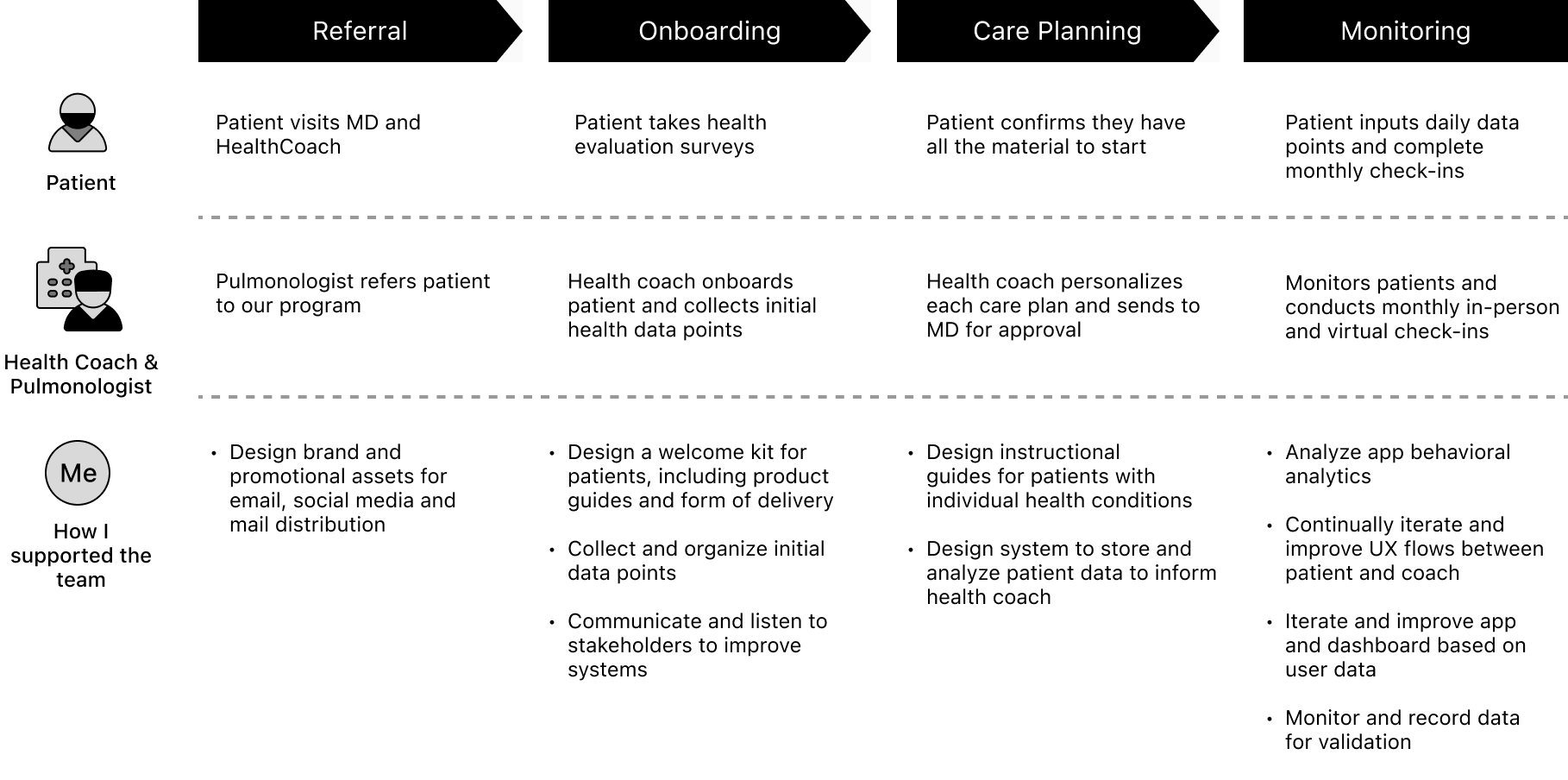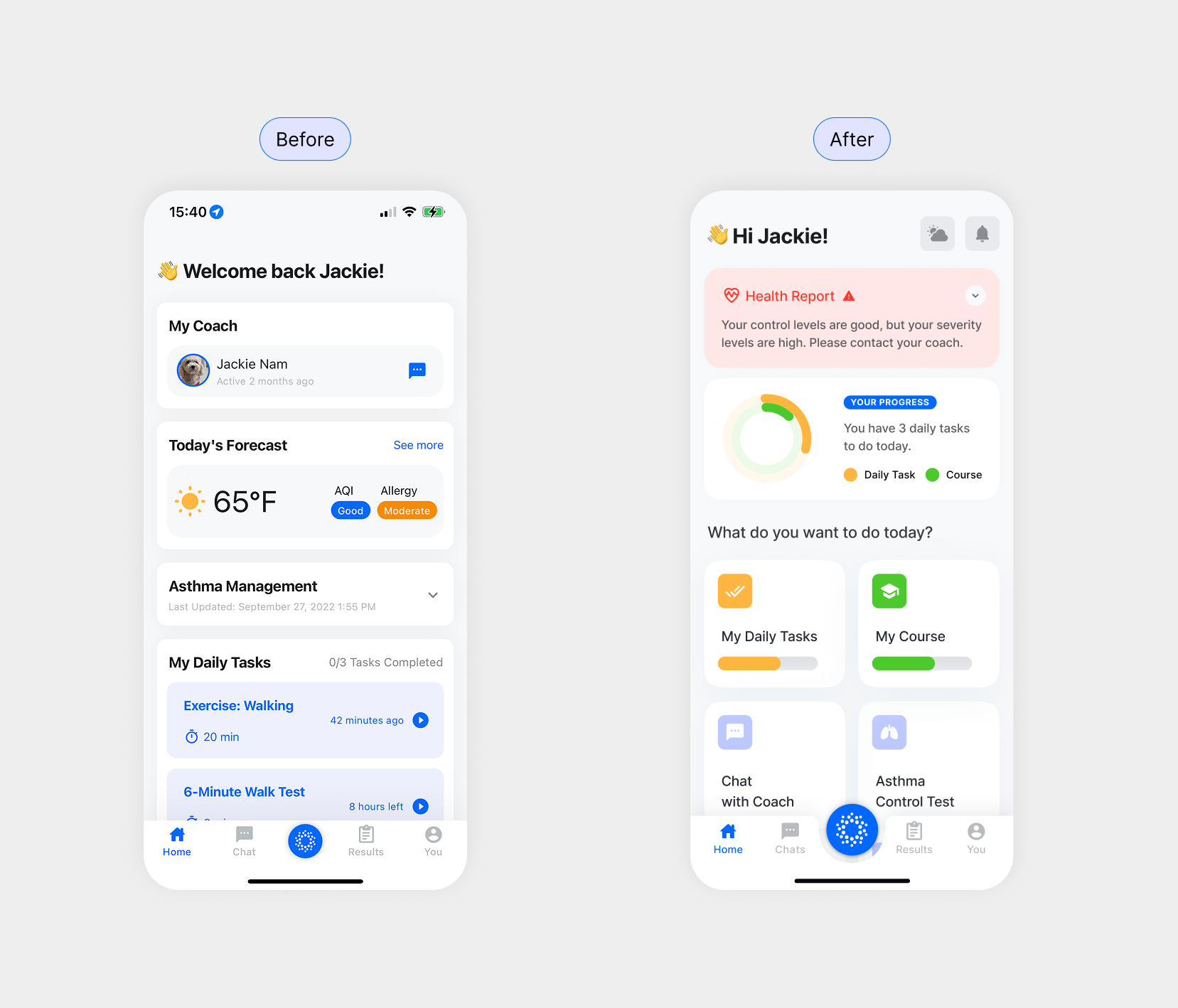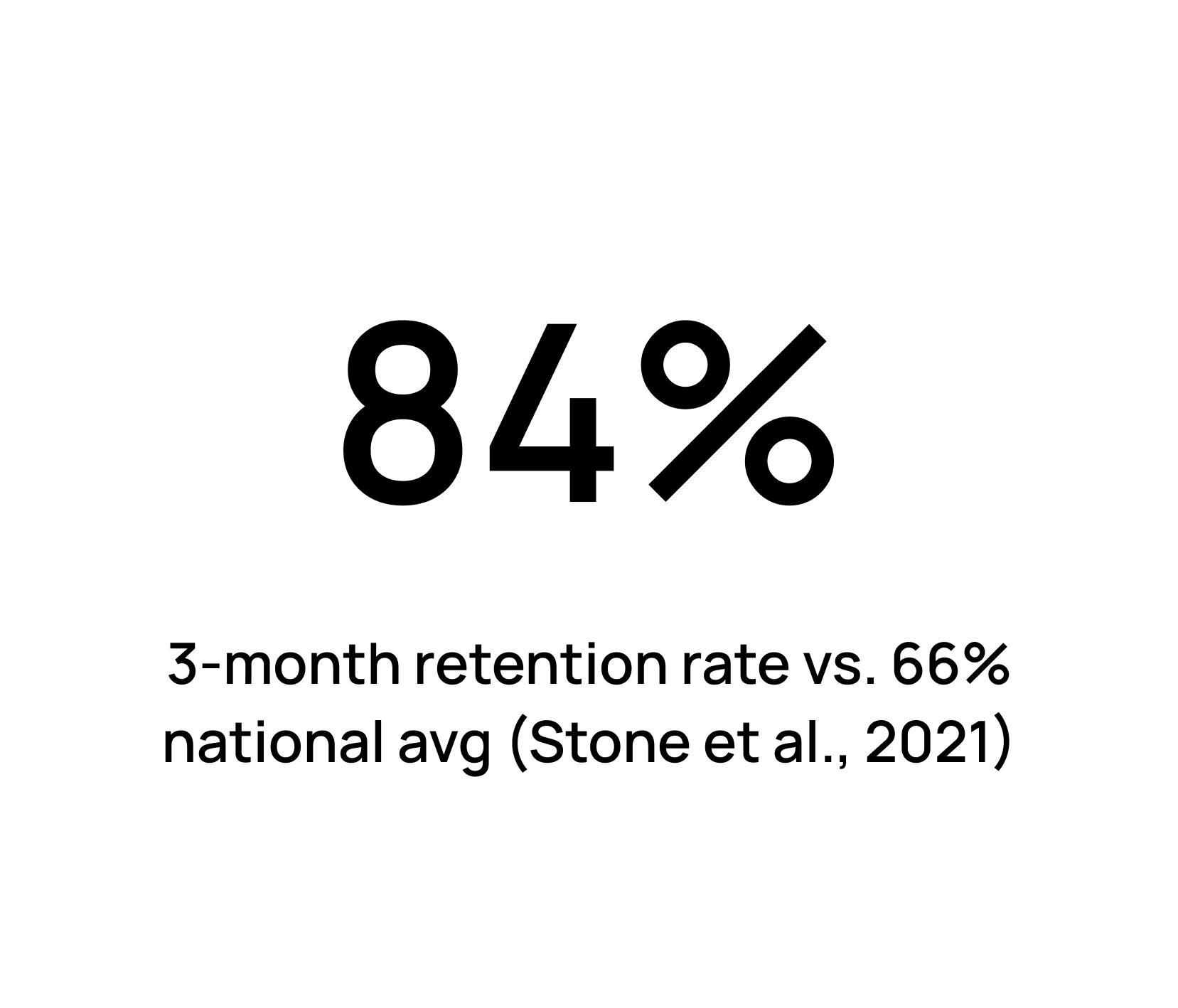
Empowering COPD Patients Through Personalized
Virtual Care
A 40% reduction in emergency visits and 84% retention rate after 3 months
Vigor Medical Systems is a health-tech startup helping patients manage cardiac and pulmonary recovery remotely — combining an easy-to-use app with ongoing support from a dedicated clinical care team.
Role: Product Design Lead | Usability Testing, UI/UX, Service Design
Timeline: 7 Weeks (Sep - Oct 2025)
Platform: Mobile App, Package Design
Background
Chronic obstructive pulmonary disease (COPD) is a progressive lung condition often caused by long-term exposure to smoke or industrial pollutants. For many patients, access to pulmonary rehab (PR) is limited. Over 90% of our patients lived more than five miles from their nearest center, making consistent treatment difficult.
Our product aimed to bridge this gap by enabling virtual, continuous care between patients and providers, lowering both the cost and barrier to treatment. However, as a seed startup, we had one health coach and one pulmonary care specialist, for our 44 patients.
Despite strong initial sign-ups, 40% of patients dropped off within three months, often due to challenges maintaining motivation and regular physical activity — a key factor in preventing emergency visits.
Challenge
How might we help COPD patients stay engaged in their rehab journey and maintain consistent care beyond the first three months?
Initial Discovery
In the early discovery phase, I identified key opportunities not only within the user-facing app but also across the internal service design process that supported it.
To understand both perspectives, I led a cross-functional stakeholder workshop to map needs across each stage of the patient journey and conducted usability testing with COPD patients to surface their most critical pain points.
These sessions revealed gaps in how care was delivered and coordinated between users and providers. These insights guided the next phase of research and design.
Stakeholder Workshops
Key Takeaways
Our early discovery revealed challenges across both patient experience and internal workflows:
77% of users struggled to complete physical tasks independently, highlighting a need for clearer guidance and adaptive exercise support.
Many patients lacked motivation and agency in their recovery journey. The condition not only limited them physically but also had a significant impact on their mental health.
Each health coach was responsible for roughly 40 patients, creating an unsustainable workload without adequate system support.
Usability Test
Connecting Patients, Coaches, and Clinicians
From our early discovery, one question kept coming up:
How can we make sure every player—patients, coaches, and clinicians—feels supported?
The stakeholder workshops made it clear that care delivery took a lot of behind-the-scenes effort. Every stage, from referral to ongoing monitoring, relied on coordination across multiple systems and people.
To address this, I mapped the full patient journey and designed a clearer communication flow between patients, health coaches, and pulmonologists. This helped the team see where support was breaking down and how we could make care feel more connected, both for patients and for the people guiding them.

Designing the Patient-Facing App
As we looked across the entire care system, one thing became clear: the patient-facing app was the heart of the experience. It was where patients stayed connected to their health coaches, logged symptoms, and recorded daily progress, creating a continuous loop of care and feedback.
Improving this app became my main focus. It was the most direct way to support patients in staying motivated, informed, and engaged in their recovery.
When I began ideating solutions, I anchored every design decision around three principles:
Accessibility
How can we make the app intuitive for elderly users?
Gamification
How can we motivate users through gamification?
Scalability
How can we make sure each patient feels supported and cared for, despite the increasing number of users?
The New Patient Experience: App Redesign
Using those design principles, the updated app gives patients an easier way to stay engaged, report changes, and receive timely feedback from their health coach.
Onboarding Screens
Spirometer Test Screens
15 Minute Exercise Program
Onboarding Experience: Welcome Kit
As part of the onboarding experience, patients received a Welcome Kit that included a guidebook and devices for tracking step count and blood oxygen levels. I designed both the kit packaging and the printed materials inside.
Impact
Real patients shared how the program helped them feel more confident managing their recovery. Many mentioned that the consistent guidance from their coaches and easy access to support made the biggest difference.
"This program has given me the tools to get me to where I want to be. Doctors just don't have time to go over with every patient. But I can see that Vigor has given me the tools. That made a difference.”
— Real Patient Testimony
"I think in the long run, Vigor's program will encourage me to keep up with the activities I'm doing now. Also my Vigor coach is very easy to talk to on the phone."
— Real Patient Testimony
Reflection
Witnessing the physical and emotional transformations of patients reminded me why I build for people. This project reinforced that design rooted in empathy and human connection can directly influence health outcomes. It wasn’t only about improving metrics, it was about restoring agency in patients who often feel limited by their condition.
I also learned supporting health coaches and clinicians is just as important as designing for patients. When the people delivering care feel equipped and supported, that impact flows naturally to the patient experience.













